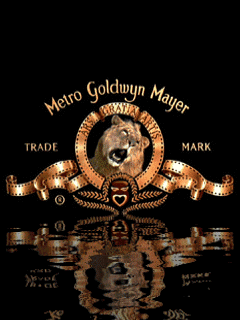| ☻☻☻☻☻☻☻☻☻ Enjoy Watching Anime Movies & Series ☻☻☻☻☻☻☻☻☻ |
|
||
|
☻ LATEST NEWS ☻
Congratulations to all the winners and non winners consolation prizes during the HOLLOWEEN ZAPPER PARTY 2010. It was Fun and Enjoy were we are sharing the spirit of holloween and remembering those who are now in heaven. ☻ REMINDERS ☻ We would like to remind everyone to please help maintain the cleanliness of our Comfort Room particularly the Female CR. As what we have observed, tissues were only left scattered on the floor or being placed above the Toilet bowl. Every employee benefits from having a clean, sanitary work environment. Help us provide that environment by Keeping the Comfort Room clean. Your compliance is required. Thank you for your usual cooperation.
☻ Anime List ☻
Avatar Digimon Onepiece Hunter X Hunter Full Metal Alchemist Dragon Ball |
|
||
 Watch Here Watch Here
The history of anime began at the start of the 20th century, when Japanese filmmakers experimented with the animation techniques that were being explored in the West. During the 1970s, anime developed further, separating itself from its Western roots, and developing distinct genres such as mecha and its Super Robot sub-genre. Typical shows from this period include Lupin III and Mazinger Z. During this period several filmmakers became famous, especially Hayao Miyazaki and Mamoru Oshii. In the 1980s, anime was accepted in the mainstream in Japan, and experienced a boom in production. The rise of Gundam, Macross, Real Robot and Space Opera set a boom as well. The film Akira set records in 1988 for the production costs of an anime film and went on to become a success worldwide. Later, in 2004, the same creators produced Steamboy, and later took over as the most expensive anime film. The Super Dimension Fortress Macross also became a worldwide success after being adapted as part of Robotech, and Megazone 23 also gained recognition in the West after it was adapted as Robotech: The Movie.[citation needed] In the 1990s and 2000s, anime series such as Dragon Ball, Sailor Moon, Pokémon, as well as films like Ghost in the Shell became worldwide successes, while other anime series such as Gundam, Macross, Neon Genesis Evangelion and Cowboy Bebop were popular in Japan and attracted attention from the West. A number of animations have been produced in the West, and the growth of the internet also led to the rise of fansub anime. Spirited Away shared the first prize at the 2002 Berlin Film Festival and won the 2003 Academy Award for Best Animated Feature, while Innocence: Ghost in the Shell was featured at the 2004 Cannes Film Festival. At vero eos et accusam et justo duo dolores et ea rebum. Stet clita kasd gubergren, no sea takimata sanctus est Lorem ipsum dolor sit amet. |
|
||
|
☻ SUCCESS STORY ☻
Few complete animations made during the beginnings of Japanese animation have survived. The reasons vary, but many are of commercial nature. After the clips had their run, reels (being property of the cinemas) were sold to smaller cinemas in the country and then disassembled and sold as strips or single frames. Ōten Shimokawa was a political caricaturist and cartoonist who worked for the magazine Tokyo Puck. He was hired by Tenkatsu to do an animation for them. Due to medical reasons, he was only able to do five movies, including Imokawa Mukuzo Genkanban no Maki (1917), before he returned to his previous work as a cartoonist. Another prominent animator in this period was Jun'ichi Kōuchi. He was a caricaturist and painter, who also had studied watercolor painting. In 1912 he also entered the cartoonist sector and was hired for an animation by Kobayashi Shokai later in 1916. He is viewed as the most technically advanced Japanese animator of the 1910s. His works include around 15 movies. Seitaro Kitayama was an early animator who made animations on his own, not hired by larger corporations. He even founded his own animation studio, the Kitayama Eiga Seisakujo, which was later closed due to lack of commercial success. He utilized the chalkboard technique, and later paper animation, with and without pre-printed backgrounds. The works of these two pioneers include Namakura Gatana (An Obtuse Sword, 1917) and a 1918 film Urashima Tarō which were discovered together at an antique market in 2007. In July 2005, an old animation film was found in Kyoto. This undated 3 seconds film, plainly titled Moving Picture ( Katsudō Shashin?), consists of fifty frames drawn directly onto a strip of celluloid. It depicts a young boy in a sailor suit writing the kanji (katsudō shashin, for "moving pictures") on a board, then turning towards the viewer, removing his hat, and offering a salute. The creator's identity is unknown, but it is thought that it was made for private viewing, perhaps as experimentation, rather than for public release. The discoverer, Naoki Matsumoto, has speculated that it could be "up to 10 years older" than the previously first known Japanese animation, Imokawa Mukuzo Genkanban no Maki, released in 1917. However, while a date of circa 1915 is possible, there is no actual basis for this extreme speculation. Yasuji Murata, Hakuzan Kimura, Sanae Yamamoto and Noburō Ōfuji were students of Kitayama Seitaro and worked at his film studio. Kenzō Masaoka, another important animator, worked at a smaller animation studio. In 1923, the Great Kantō earthquake destroyed most of the Kitayama studio and the residing animators spread out and founded studios of their own. Prewar animators faced several difficulties. First, they had a hard time competing with foreign producers such as Disney, which were influential on both audiences and producers. Since foreign films had already made a profit abroad, they could be sold for even less than the price domestic producers need to charge in order to break even. Japanese animators thus had to work cheaply, in small companies with only a handful of employees, but that could make matters worse: given costs, it was then hard to compete in terms of quality with foreign product that was in color, with sound, and made by much bigger companies. Japanese animation until the mid-1930s, for instance, generally used cutout animation instead of cel animation because the celluloid was too expensive.[4] This resulted in animation that could seem derivative, flat (since motion forward and backward was difficult) and without detail.But just as postwar Japanese animators were able to turn limited animation into a plus, so masters such as Yasuji Murata and Noburō Ōfuji were able to do wonders in cutout animation. Animators such as Kenzō Masaoka and Mitsuyo Seo, however, did attempt to bring Japanese animation up to the level of foreign work by introducing cel animation, sound, and technology such as the multiplane camera. Masaoka created the first talkie anime, Chikara to Onna no Yo no Naka, released in 1933,and the first anime made entirely using cel animation, The Dance of the Chagamas (1934). Seo was the first to use the multiplane camera in Ari-chan in 1941. Such innovations, however, were hard to support purely commercially, so prewar animation depended considerably on sponsorship, as animators often concentrated on making PR films for companies, educational films for the government, and eventually works of propaganda for the military. During this time, censorship and school regulations discouraged film-viewing by children, so anime that offered educational value were supported and encouraged by the Monbusho (the Ministry of Education). This proved important for producers that had experienced a hard time releasing their work in regular theaters. Animation had found a place in scholastic, political and industrial use. |
|||
|
As anime expands to non-Japanese markets such as the United States and Europe, the cycle of cultural influence inevitably extends into these markets. Thus, some Western animation companies have produced works of some anime resemblance. The Animatrix and the Nickelodeon series Avatar: The Last Airbender were influenced by anime. Other animated series such as Powerpuff Girls and Teen Titans have at least a few anime characteristics. While these animated series are not considered to be anime, they do show some characteristics found in typical anime. In addition, Cartoon Network co-produced anime, such as IGPX with Japanese directors. France and Canada have also started to produce anime-inspired shows such as Totally Spies! (France), Martin Mystery (Canada/France/Germany), Code Lyoko (France) and Team Galaxy (France). Powerpuff Girls made the transition into a true anime (Powerpuff Girls Z). Since the early 90's, some producers of Western animation have outsourced the animation to many Asian companies including Japanese animation studios.Animaniacs is an early example of Western animation being animated by Japanese animators.The Boondocks is produced in cooperation with Studio Madhouse, and Walt Disney Animation Studios has contracted Madhouse to produce the Stitch! TV series (a reimagined version of Lilo and Stitch). • Anime Industry • History of Animation • List of animated feature films a |
 |
||
| Copyright © Zapper Friends Designed by Friends of Zapper | |||
| If you wish to share your adventure, fun and events into your place to us!? Its great, we love to know more from you. click here | |||
 |  |
 |
Home | Sign Up | Sign In |  |
Updates | Publisher | Blogs | Photo | Forum | Welcome Guest | RSS |








